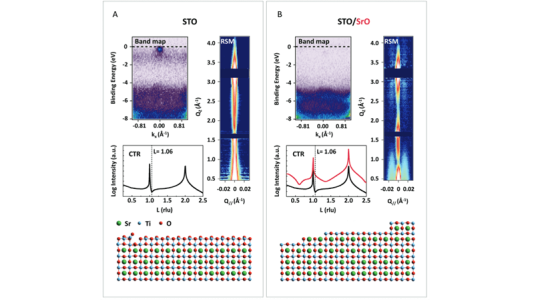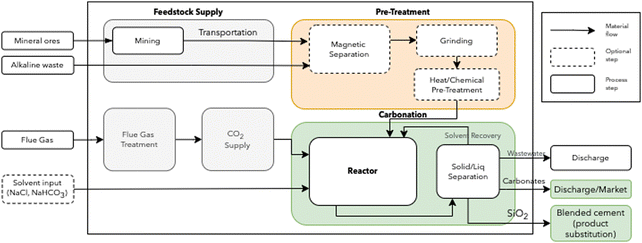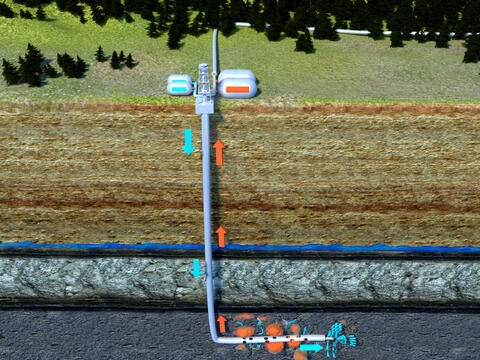2023-08-08 アルゴンヌ国立研究所(ANL)

Measured atomic and electronic structures from the as-prepared surface (A) and the surface after the deposition of 1 ML SrO (B).
◆研究者はAdvanced Photon Sourceで複数の原位X線技術を使用して、この現象を発見しました。これにより、界面に存在するTiO2ダブルレイヤーという欠陥によって、通常絶縁体とされている材料の表面でも2次元電子ガスが発生することが明らかになりました。これにより、従来の考え方に反する導電性の現れが説明され、さまざまな理論に対する新たな示唆がもたらされました。
<関連情報>
- https://www.anl.gov/article/origin-of-the-2d-electron-gas-at-the-srtio3-surface
- https://onlinelibrary.wiley.com/doi/10.1002/adma.202200866
SrTiO3表面の2次元電子ガスの起源 Origin of the 2D Electron Gas at the SrTiO3 Surface
Xi Yan, Friederike Wrobel, I-Cheng Tung, Hua Zhou, Hawoong Hong, Fanny Rodolakis, Anand Bhattacharya, Jessica L. McChesney, Dillon D. Fong
Advanced Materials Published: 16 April 2022
DOI:https://doi.org/10.1002/adma.202200866
Abstract
Bulk SrTiO3 is a well-known band insulator and the most common substrate used in the field of complex oxide heterostructures. Its surface and interface with other oxides, however, have demonstrated a variety of remarkable behaviors distinct from those expected. In this work, using a suite of in situ techniques to monitor both the atomic and electronic structures of the SrTiO3 (001) surface prior to and during growth, the disappearance and re-appearance of a 2D electron gas (2DEG) is observed after the completion of each SrO and TiO2 monolayer, respectively. The 2DEG is identified with the TiO2 double layer present at the initial SrTiO3 surface, which gives rise to a surface potential and mobile electrons due to vacancies within the TiO2−x adlayer. Much like the electronic reconstruction discovered in other systems, two atomic planes are required, here supplied by the double layer. The combined in situ scattering/spectroscopy findings resolve a number of longstanding issues associated with complex oxide interfaces, facilitating the employment of atomic-scale defect engineering in oxide electronics.



